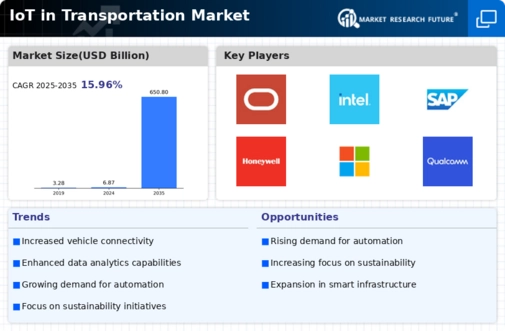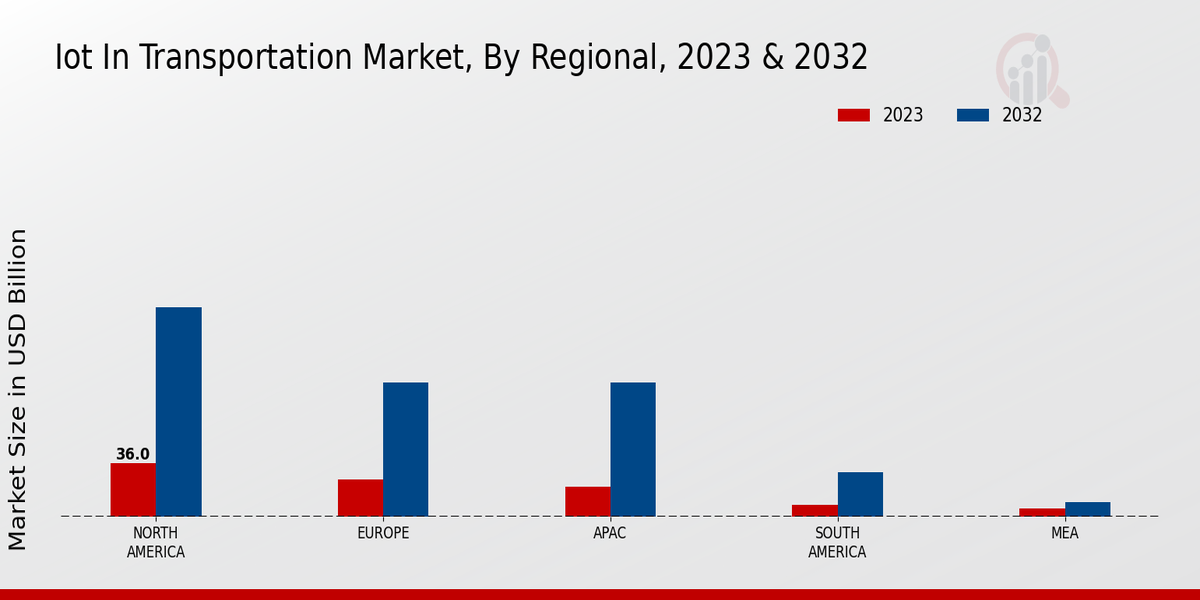Market Growth Projections
Increased Focus on Sustainability
Sustainability is becoming a central theme in the Global IoT in Transportation Market Industry, as stakeholders seek to reduce their environmental impact. IoT solutions facilitate the monitoring and management of emissions from transportation systems, enabling companies to adopt greener practices. For example, fleet management systems can optimize routes to minimize fuel consumption and emissions. This focus on sustainability aligns with global efforts to combat climate change, thereby driving investments in IoT technologies that support eco-friendly transportation solutions.
Government Initiatives and Funding
Government initiatives play a pivotal role in the expansion of the Global IoT in Transportation Market Industry. Various national and local governments are investing in smart infrastructure projects that incorporate IoT technologies. For example, the U.S. Department of Transportation has launched programs to promote connected vehicle technologies, which aim to improve road safety and efficiency. Such initiatives not only provide funding but also create regulatory frameworks that encourage the adoption of IoT solutions. This supportive environment is likely to propel the market towards a projected value of 650.8 USD Billion by 2035.
Integration of Advanced Technologies
The integration of advanced technologies such as artificial intelligence and big data analytics is transforming the Global IoT in Transportation Market Industry. These technologies enable real-time data processing and predictive analytics, which enhance decision-making in transportation systems. For instance, AI-driven traffic management systems can analyze vast amounts of data to optimize traffic patterns and reduce delays. This integration is expected to contribute to a compound annual growth rate of 51.25% from 2025 to 2035, highlighting the potential for growth as more organizations adopt these sophisticated solutions.
Growing Adoption of Connected Vehicles
The growing adoption of connected vehicles is significantly influencing the Global IoT in Transportation Market Industry. As consumers increasingly demand vehicles equipped with IoT capabilities, manufacturers are responding by integrating advanced connectivity features. Connected vehicles can communicate with each other and infrastructure, enhancing safety and efficiency. This trend is evident in the rising number of vehicles equipped with IoT technologies, which is expected to drive market growth substantially in the coming years. The integration of these technologies is likely to reshape the transportation landscape.
Rising Demand for Smart Transportation Solutions
The Global IoT in Transportation Market Industry is experiencing a surge in demand for smart transportation solutions, driven by the need for enhanced efficiency and safety. As urban populations grow, cities are increasingly adopting IoT technologies to manage traffic flow and reduce congestion. For instance, smart traffic lights and connected vehicles are being implemented to optimize travel times. This trend is reflected in the projected market value of 6.87 USD Billion in 2024, indicating a robust interest in innovative transportation solutions that leverage IoT capabilities.














